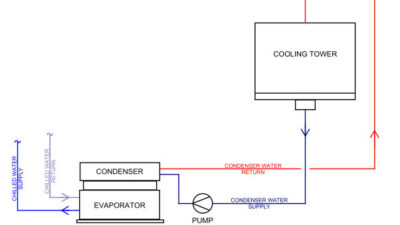Commissioning, retro-commissioning; electrical, power; energy, sustainability; HVAC, mechanical.
Engineering firm: Wood Harbinger
2017 MEP Giants rank: 92
Project: Naval Base Kitsap industrial control system modernization
Address: Bremerton, Wash.
Building type: Government building/military facility
Project type: System overhaul
Engineering services: Commissioning, retro-commissioning; electrical, power; energy, sustainability; HVAC, mechanical
Project timeline: October 2013 to March 2016
MEP/FP budget: $9.4 million
Challenges
The Navy desired to standardize and consolidate their facility monitoring and control capabilities across three of the Naval Base Kitsap campuses: Bangor, Bremerton, and Keyport. This project included upgrading the direct digital control (DDC)and monitoring systems in 136 buildings across these three locations and integrating them with the existing Naval Regional Northwest Industrial Control System (NRNW ICS). In an effort to monitor energy uses and increase energy savings, this project enabled centralized energy monitoring and building control from the command center.
Wood Harbinger provided mechanical and electrical engineering as well as pre-construction and post-construction phase commissioning services for the upgrades to the ICS controls, associated communication systems, and power requirements for new building DDC panels and ICS system supervisory controllers. The project consisted of selective additions, demolition, alterations, and replacements of existing pneumatic controls to digital at the equipment level; addition of JAVA application control engine (JACE) controllers at the building level; and a new fiber optic network to enable communication from each building to the command center.
Developing a clear and comprehensive picture of the existing facility uses and conditions proved to be the greatest challenge the team faced on the project. The team needed to confirm what equipment in each building needed to be included in the centralized control network.
Much of the information provided at the outset of the project proved to be outdated and incorrect. Previous evaluations were conducted 10 to 15 years prior kicking off this project and the last recorded documents for many of the buildings included in the project scope dated back to the 1960s. This created a discrepancy between documentation and actual conditions. Many buildings included in the project had undergone renovations that added or omitted systems, some buildings were vacant and unused, and others had changed purposes over the years. For example, one building was called out in the project scope as a “Torpedo Support Shop,” but in reality was a workshop used by the base safety team, where they also offered a motorcycle safety class. The preconstruction investigation proved an invaluable phase of the project in order to assure the Navy’s goals were met by monitoring and controlling the correct equipment and buildings.
The sheer magnitude of the project scope proved to be another challenge. Wood Harbinger’s drawings alone totaled over 600 sheets, plus specifications and design narratives. 136 buildings of various uses were included in the scope and all were to remain occupied during construction.
Solutions
The project team implemented a digital control and monitoring system and fiber optic network using a Niagra AX platform and SkySpark fault detection and diagnosis (FDD) software. This enables 24/7 energy monitoring and building control from a centralized, remote location. By centralizing the building controls and implementing a real-time monitoring and notification software, the Navy increased its awareness of its building portfolio’s operations and is now able to detect problems that increase energy consumption. Now, if a system is operating less than optimally, a notification is received at the command center and the Navy can make an informed decision to address the problem in a timely manner, rather than going unaware of the issue until prescheduled maintenance is performed.
The Navy estimated that this project would result in a 10% to 20% energy cost savings over the lifespan of the buildings at the three base locations. Catching problems early helps the Navy better manage its facility portfolio to achieve energy use reduction and energy cost savings.
The project team managed the design and construction complexity of such a large undertaking by subdividing the project into several packages. Design was completed in four distinct packages, including an initial site package and one each per location (Bangor, Bremerton, and Keyport.) Dividing the design documents created a more reasonable page count for the Navy’s team to review at each submittal stage. The team was able to apply lessons learned and incorporate comments provided on the first set into the subsequent design packages, reducing the need for redundant reviews.
Construction was phased to include 10 buildings at a time. This created a manageable load while minimizing impact in these occupied facilities. The team had to assure that the overall project remained on track while addressing the needs and concerns of each building’s manager. Both goals were accomplished through good communication within the project team.



